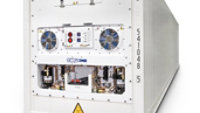Covid-19: The importance of a flexible redistribution model

In the US, logistical performance varies across states as it depends on relative social factors such as economic growth rates and population density. Therefore, each states’ Covid-19 distribution and administration plan has to be optimized to support their rollout as effectively as possible.
Whether vaccines are being delivered directly to the point of vaccination, a state warehouse for repackaging for redistribution to rural populations, or local and national distribution, administration teams need to be able to remain agile to ensure no vaccine is wasted.
Three challenges impacting state redistribution
1. The push for equitable vaccine allocation
States are concerned about getting vaccines to their populations as fairly as possible but face challenges on how to structure the distribution effectively. Some states base vaccine allocation purely on population rates, while others are taking the eligibility of that population into account.
An issue challenging equitable distribution is increasing tensions between urban and rural areas. For example, some urban residents are driving outside of their county to gain access to a vaccine appointment in a rural area.
Overall, states are overwhelmed with how to make vaccine administration equitable as well as dealing with challenges in refrigeration or freezer storage, which is typically limited in rural areas. In addition, some rural populations lack the transportation links to travel to vaccination locations that contain a high concentration of health workers and facilities.
Vaccine allocation is a vexing problem as many states have been used as examples of what not to do, but very few have been able to offset all challenges in one fell swoop. As more counties reach higher thresholds of vaccinations, states may need to be flexible and redistribute vaccines between counties to ensure they are providing vaccine as equitably as possible.
2. Rapidly increasing vaccine supply
In March 2021, the US increased the number of vaccine doses it sent out across the country to 27 million, which is more than a 300 per cent increase from January, Spectrum News reported. Pfizer and Moderna are contributing to the increased distribution efforts by delivering 100 million Covid-19 vaccine doses a month earlier than expected, in May instead of June. Pfizer’s ability to meet their delivery ahead of schedule means cutting their manufacturing time from 110 to 60 days.
The increase in vaccine supply has changed initial challenges of not having enough vaccines to keep up with supply distribution. If states leverage new sites to increase distribution capacity, potentially mass vaccination sites in stadiums or schools, then they must also find additional resources and equipment such as flexible and scalable cold storage solutions to safely store their vaccines.
Some sites may only require storage for several hundreds of vaccines, but large vaccination sites may need to house thousands, if not tens of thousands to optimize their throughput. Now that supply is no longer a challenge, states need to be able to scale their plans accordingly to avoid stalling vaccination rollout.
3. Risk mitigation plans to safeguard vaccines
In January 2021, Keiser Permanente in Seattle had to find arms for 1,600 Covid-19 vaccine doses when their hospital refrigerator broke down in the middle of the night. They had to do a last-minute vaccine drive or risk losing the entire refrigerator’s vaccine supply. A month later, Harris County Public Health in Texas had to redistribute 5,410 vaccine doses when their facility lost power during a winter storm when their backup generator failed.
Once the vaccine exits the refrigerated phase and enters room temperature, depending on the vaccine, it takes up to 12 hours for the vaccine to be wasted, which increases the pressure to have plans in place before unforeseen events occur. The time constraints highlight the need for multiple layers of redundancy as there may not be enough time to create and execute a plan in mere hours. Even one layer of risk mitigation might not be enough to safeguard Covid-19 vaccines in light of unexpected events like unplanned freezer repairs, natural disasters, or power outages.
Flexible cold storage solutions
Whether for primary cold storage of a few hundred vaccines or tens of thousands for a warehouse to support a hub and spoke distribution model, products such as Thermo King Cold Storage Solutions can help.
These flexible and scalable temporary cold storage solutions flex from minus-70 degrees Celsius up to plus-40 degree Celsius and can hold hundreds to tens of thousands of vaccine vials. With multiple power sources in case of power outages and monitoring capabilities, Thermo King’s small, portable units and large SuperFreezer temporary storage unit enable states to scale as various challenges occur and quickly respond with risk mitigation plans already in place.
At Thermo King, we understand that if the quality of pharmaceutical product shipments is compromised, the risk is more than loss of cargo; it can compromise the health and wellbeing of patients. Our refrigeration and temperature-controlled storage solutions enhance the quality of life by keeping products at their optimal temperature throughout the pharma cold chain.
Learn more about Thermo King’s pharmaceutical transport and storage solutions.



